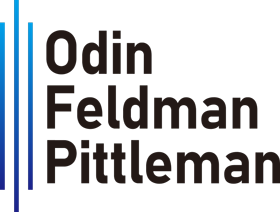As has been much discussed, loan forgiveness is a key feature of the CARES Act’s Paycheck Protection Program (PPP) administered by the Small Business Administration (SBA), but there has been little guidance regarding the process and criteria for seeking forgiveness. Late Friday, May 15, 2020, the SBA and Department of Treasury released the PPP loan forgiveness application and related instructions, providing some clarity. Additionally, the Treasury Department indicated in an associated press release that the SBA will issue regulations and guidance to further assist borrowers in the completion of their applications for forgiveness, and provide lenders with guidance on their responsibilities.
Key takeaways
In determining the payroll costs a borrower may include in its forgiveness amount, the borrower may choose either the eight weeks starting with the day the borrower received the loan proceeds or use an “alternative payroll covered period” of eight weeks (56 days) beginning on the first day of its first pay period following loan disbursement. This alternate period may enable borrowers to have more of their loan amount be forgivable due to timing.
The borrower must confirm whether it, together with its affiliates, received PPP loans in excess of $2 million. This confirms the SBA’s guidance last week in FAQ 46 which we reported that the agency will conduct a full review of all loans that are over $2 million.
Despite some press suggesting that perhaps new rules would relax the 75/25 split, the application requires that the borrower confirm that at least 75% of the forgiveness amount is for payroll costs.
Although the PPP required that eligible expenses be incurred and paid during the covered period, the new guidance provides the borrower with flexibility to include expenses incurredor paid during the applicable period.
Payroll costs are considered “incurred” on the day that an employee’s pay is earned.
Payroll costs are considered “paid” on the day that paychecks are distributed or the borrower originates an ACH transaction.
Additionally, payroll costs incurred but not paid during the last pay period of the covered period (or alternative payroll covered period) are eligible for forgiveness if paid on or before the next regular payroll date.
Note this concept of “incurred” or “paid” also appears applicable to other permissible uses of funds, such as utilities and mortgage interest/rent payments.
Under the CARES Act and original guidance, any loan forgiveness was to be reduced for (a) salary reductions of more than 25% of any employee who made $100,000 or less, or (b) any headcount reductions of FTE employees. The new application provides that the borrower’s forgiveness amount will not be reduced for headcount reductions related to:
For each employee 1) to whom the borrower made a good-faith written offer to rehire and such employee rejected that offer, or 2) who, during the covered period or alternative covered period, was a) fired for cause, b) voluntarily resigned, or c) voluntarily requested and received a reduction in hours.
“FTE” is now defined essentially to mean each employee who works 40 hours or more per week, and two employees who each work less than 40 hours per week can be considered one FTE.
The application requires the borrower to maintain certain documentation related to its PPP loan for at least six years after the loan is forgiven or repaid in full, including documentation supporting the necessity certification and eligibility.
Although the new application and related instructions provide borrowers with a better understanding of the PPP loan forgiveness process and criteria, there are still many unanswered questions. It is important that borrowers work with their payroll and benefits providers, tax and accounting professionals and legal counsel as they complete their loan forgiveness application.
Contact OFP’s Corporate Group if you have questions or need assistance.
Disclaimer: The information contained herein is provided for informational purposes only and should not be construed as legal advice on any subject matter. This information contained herein is not provided in the course of an attorney-client relationship and is not intended to constitute legal advice. Any information contained in this article is not intended to be a substitute for legal counsel. No one should act or refrain from acting on the basis of any content included in this article but should instead seek the appropriate legal advice on the particular facts and circumstances at issue from a properly licensed attorney. The author expressly disclaims all liability in respect to actions taken or not taken based on any of the contents of this article. This article contains general information and may not reflect current legal developments.

